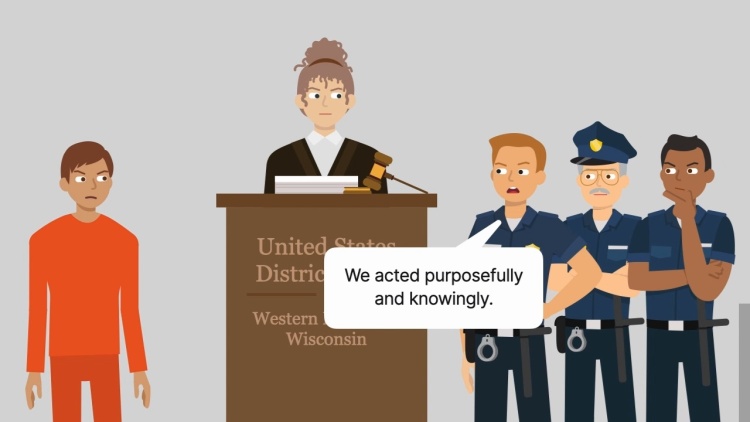Kingsley v. Hendrickson
United States Supreme Court
576 U.S. 389, 135 S. Ct. 2466 (2015)
- Written by Angela Patrick, JD
Facts
Michael Kingsley (plaintiff) had been arrested and was awaiting trial in a jail. Stan Hendrickson and other officers (collectively, the officers) (defendants) moved Kingsley to another cell. Kingsley was not cooperative during the transfer. Kingsley and the officers disputed some of what occurred after Kingsley was in the new cell. However, it was undisputed that while Kingsley was still handcuffed and laying on his stomach, Hendrickson put his knee on Kingsley’s back, and another officer tased Kingsley’s back for about five seconds. The officers then left Kingsley laying there for 15 minutes before returning and removing the handcuffs. Kingsley sued the officers under 42 U.S.C. § 1983, alleging they had used excessive force in violation of Kingsley’s constitutional rights under the Fourteenth Amendment’s Due Process Clause. At trial, the disputed issue was whether the force the officers had used intentionally was excessive. Part of the jury instructions stated that the officers were guilty only if they had not personally believed that Kingsley posed a safety threat. The jury returned a verdict for the officers. Kingsley appealed, arguing that an objective standard governed whether the force used by the officers had been reasonable or excessive but that the jury instructions had required Kingsley to meet a tougher, subjective standard. The Seventh Circuit affirmed, reasoning that an excessive-force claim required a finding that the officers were subjectively aware that the force they used was excessive. The United States Supreme Court granted certiorari to resolve a circuit split about whether an excessive-force claim made by a pretrial detainee required establishing objectively or subjectively unreasonable force.
Rule of Law
Issue
Holding and Reasoning (Breyer, J.)
Dissent (Scalia, J.)
What to do next…
Here's why 899,000 law students have relied on our case briefs:
- Written by law professors and practitioners, not other law students. 47,000 briefs, keyed to 994 casebooks. Top-notch customer support.
- The right amount of information, includes the facts, issues, rule of law, holding and reasoning, and any concurrences and dissents.
- Access in your classes, works on your mobile and tablet. Massive library of related video lessons and high quality multiple-choice questions.
- Easy to use, uniform format for every case brief. Written in plain English, not in legalese. Our briefs summarize and simplify; they don’t just repeat the court’s language.





